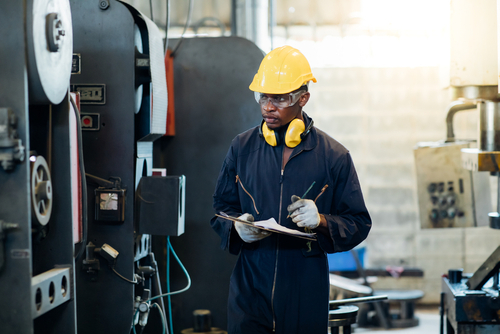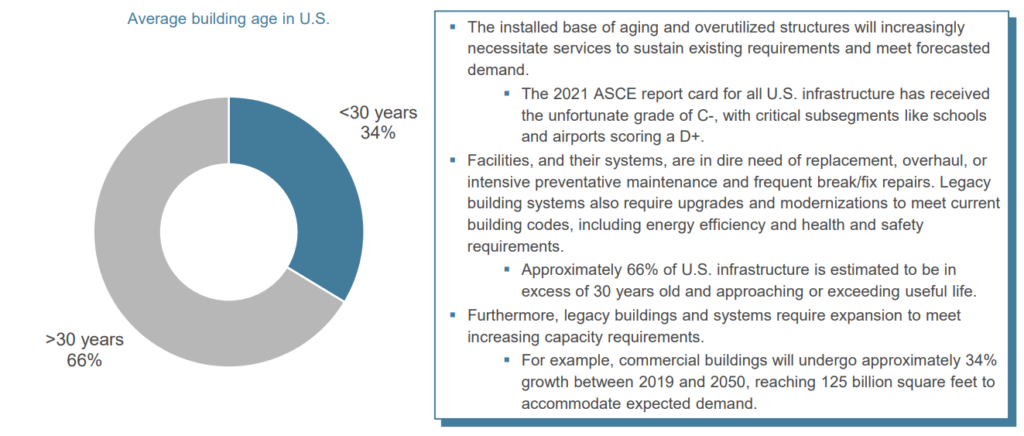Facility management is not for the weak-willed—it is a tough job that demands a professional that is all things to all people: builder, fixer, tinkerer, mover, problem-solver, even confidante. The facility manager must navigate a schedule that serves up curveballs on an hourly basis and which is expected to run like clockwork.

Part of what makes facility management so challenging is the sheer diversity and complexity of disciplines and issues that it involves. One moment a critical machine needs to be fixed, while in the next one the ambient temperature concerns of employees need to be addressed. Throw into the mix taking maintenance workers’ concerns into consideration while being attentive to the needs of clients, customers, and management—and the complexity ratchets up!
It is important to understand the “hard” and “soft” services that comprise the facility management function in order to better appreciate its complexity. This article will outline how hard facility management services differ from soft ones, and how the two are also often interdependent.
The Fundamentals: Hard vs. Soft Maintenance Services
“Hard maintenance” refers to those services that are building-related and intrinsic to the built environment. A good rule of thumb is that this one refers to the maintenance of those assets that cannot be removed because they are physically part of a building or its physical workings or systems, such as electrical systems, stairwells, and fire safety systems. An excellent rule of thumb: think law. All this maintenance will be governed by strict laws and building codes. Also, they will invariably relate to the direct health and safety and physical welfare of employees. Another excellent example is a heating, ventilation, and air-conditioning (HVAC) system.
“Soft maintenance” refers to those services that focus on what surrounds the built environment and ensure they work properly. A good rule of thumb is that they should ensure a comfortable or healthy work environment, such as sanitation, waste management, or window cleaning. They are also the services that help to improve the quality of the work environment, such as landscaping and catering services. These types of maintenance services may or may not be directly governed by applicable laws and regulations.
Hard Maintenance in Perspective
A deeper dive into what constitutes hard maintenance services can be derived by understanding its core fundamentals, which encompass:
- a focus on physical assets,
- a focus on the built environment,
- a focus on physical systems,
- a focus on safety, health, hygiene, and security, including what constitutes a “healthy” building or facility.
A distinct attribute of hard maintenance services is that they are constant features of any facility or building and cannot be easily interrupted. Simply imagine the disruption that is caused by suddenly stopping essential building-related systems such as electricity, plumbing, HVAC systems, or fire safety and suppression systems, as just a few examples.
An important hard maintenance consideration (not to mention a huge headache) for many facility managers, be they in the public/commercial or public sectors, is the aging infrastructure. “Legacy” buildings and allied physical assets can often present serious and costly challenges regarding their upkeep and continued viability as infrastructure. The scale of the issue in the United States is immense, as can be seen in the pie chart and commentary below, based on the 2021 Report Card for America’s Infrastructure issued by the American Society of Civil Engineers (ASCE):

Soft Maintenance in Perspective
If we dig deeper into what constitutes soft maintenance services by also understanding its core fundamentals, they should encompass:
- a focus on people,
- a focus on management systems,
- a holistic focus on employee wellness, health, and productivity,
- a focus on a positive, sustainable maintenance culture.
Central to soft maintenance services is the “El Dorado” of all maintenance: a sound and vigilant maintenance culture. This culture should incorporate and reflect a company’s core values and ethics. It will be the driver for maintenance-related behavior, perception, and norms while guiding the maintenance department in its daily maintenance scheduling and practices.
The maintenance culture within any organization cannot be underestimated—it’s critically important in ensuring everything works, from heating and cooling when needed to the spatial design and ergonomic comfort of workspaces.
The Overlap Between Hard and Soft Maintenance
There are more instances than not where the two types of maintenance overlap. This can occur in a variety of different combinations, including the following three:
1. Physical asset management (hard) and management systems (soft). Managing physical assets should always be in the context of applicable management systems, including those for maintenance, procurement, health and safety, security, and finance. Systems-led objectives and planning will ensure assets that last longer, are less likely to break down, and cost less to maintain.
2. Equipment and machinery integrity (hard) and the occupational health and safety of employees (soft). There is a direct correlation between well-maintained equipment and the health and safety of those who work or are in close proximity to said equipment. To achieve this, the maintenance approach should be risk-based and include factors such as the operating environment, inherent dangers of equipment or components, and the intensity of use.
3. Ensuring buildings are smart (hard) and employee comfort and wellness (soft). Buildings driven by digital innovations such as the Internet of Things (IoT) and smart analytics should ensure more comfortable workspaces for all. These measures should also ensure buildings and facilities that are smarter and more sustainable in terms of energy efficiency, natural resource usage, waste management, and carbon neutrality. Gone are the days of facility managers having to contend with energy wastage due to lights or heating left on in offices—courtesy of smart utility sensors, as just one small example.
Differentiating the differences between hard and soft maintenance services provides insight into the sheer complexity of the facility management function. Importantly, these services also overlap in all facets of maintenance, in a complex maze of connectivity.
Is it any wonder that the facility manager is the epitome of the modern “Renaissance” professional?
Bryan Christiansen is the founder and CEO of Limble CMMS. Limble is a modern, easy-to-use mobile CMMS software that takes the stress and chaos out of maintenance by helping managers organize, automate, and streamline their maintenance operations.
